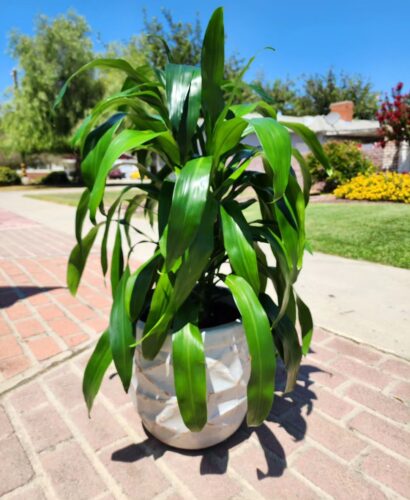Are you concerned about why the Dracaena stem is turning Black? Worry not; read this post for the best solutions.
Corn plants or Dracaena are beautiful tropical plants that bring serenity and peaceful vibes to home. These plants are quite low-maintenance and hardy, but sometimes you notice and think, Why is Dracaena Stem Turning Black? Well, don’t worry. This post will solve your problem.
Why is Dracaena Stem Turning Black

When a dracaena develops black stems, it’s typically a sign that the plant is rotting. This condition arises when something weakens the plant and makes it vulnerable to damaging microorganisms.
Several factors can weaken a dracaena. For instance, inconsistent watering practices over an extended period can severely damage the plant. To avoid this, ensure the soil dries to the touch before watering thoroughly. Also, allow excess water to drain out from the holes at the bottom of the pot. Let the water drain fully, and empty the saucer beneath the pot.
Poor or old potting soil can mismanage water, so it’s important to change the potting soil annually and whenever you repot the plant. While doing this, ensure the drainage holes in the pot are not blocked. Inefficient potting soil can become excessively soggy, which leads to plant rot. Do remember, dracaena plants don’t go well with fluoride, so use filtered water. The initial signs of fluoride toxicity include dark streaks and brown tips on the leaves.
Additionally, be alert for insects and mites that can weaken plants and make them susceptible to diseases. Mites can cause problems for dracaena.
How to Solve Stem Rot in Dracaena
If you observe the stem of a corn plant or other dracaena turning black, it’s time to take cuttings. The parent plant will likely die, but you can propagate new plants from its healthy parts.
Use a sharp knife or pruning shears to cut one or more 6-inch sections of stem that are free from black, smelly rot. Place the lower 2 inches (5 cm) of the stem in a glass of water. Top off the water daily and change it if it becomes cloudy.
You will see white nodules on the stem portion which is below the water. Roots will emerge from these nodules. Buds will also develop from under the bark on the upper part of the stem.
One more solution to solve this issue is to root side shoots. If you do not have sufficient healthy stems, then examine the shoots properly to ensure there are no symptoms of rot. Plant them in a container filled with moist potting mix, and cover the pot using a plastic bag to maintain the humidity. Take off the bag after the shoots are rooted and start to grow.



